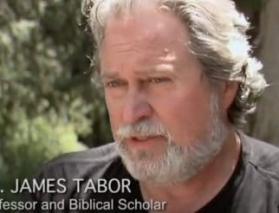The Apostle Paul wrote to the Christians at Philippi, exhorting them to be humble and love one another (Philippians 2.1-4). Then he added what all modern scholars insist is a pre-existing hymn that probably was known to his readers and whose composer remains unknown to us. Paul introduces this hymn by telling readers, “Have this attitude in yourselves which was also in Christ Jesus” (v. 5 NASB). Then he relates this hymn about Jesus as follows: “who, although He existed in the form of God, did not regard equality with God a thing to be grasped, but emptied Himself, taking the form of a bond-servant, and being made in the likeness of men. And being found in appearance as a man, He humbled Himself by becoming obedient to the point of death, even death on a cross. Therefore also God highly exalted Him, and bestowed on Him the name which is above every neame, that at the name of Jesus EVERY KNEE SHOULD BOW, of those who are in heaven, and on earth, and under the earth, and that every tongue should confess that Jesus Christ is Lord, to the glory of God the Father” (vv. 6-11 NASB).
Philippians 2.6-11 has had a most profound impact on the history of Christology. H.E. Todt says of it, “Christological doctrine has been developed in Protestantism mainly with regard to the concepts expressed in Phil. 2. The synoptic texts [first three gospels in the New Testament] were interpreted to conform to this passage.” I say it should have been vice versa.
Consequently, Philippians 2.6-11 has been hotly debated among modern, New Testament (NT) scholars. N.T. Wright says the main reason is that it “is one of the most notoriously complex passages” in all of Paul’s NT letters. Due to the necessary brevity of this article, we will only be able to scratch the surface of this scholarly discussion.
Two contrasting interpretations of Philippians 2.6-11 have prevailed among these scholars. The traditional “incarnational” or “preexistent interpretation,” which dominates to the present. It means that vv. 6-7 presents Jesus as personally existing in heaven as the Logos-God prior to his earthly life and being equal in divinity with God the Father. The “anthropological” or “human interpretation,” which is gaining favor with scholars recently, means that vv. 6-8 refers only to Jesus’ earthly life and therefore has nothing to do with preexistence or incarnation. Some who hold this view believe the NT says Jesus preexisted, but not here.
Those who adopt the preexistent interpretation of this Philippians 2 hymn view it in three stages: preexistence in v. 6, incarnation in vv. 7-8, and heavenly exaltation in vv. 9-11. They interpret “form of God” in v. 6 as Jesus having preexisted eternally as a distinct hypostasis as Greek church fathers asserted, but we would say “Person.” These scholars then cite as a parallel passage Jesus portrayed as the Logos of John 1.1-18. So, they conclude that during Jesus’ eartly life he possessed the same divine nature as that of God the Father, which makes him equal with the Father.
How one interprets the expression, “in the form of God” (Gr. en morphe theou), largely determines one’s interpretation of the remainder of the hymn. This critical phrase is difficult partly because, except for cognates, morphe (“form”) occurs only twice in the Greek NT, both being here in vv. 6-7. In most Greek literature, morphe means “outward appearance,” that is, what can be perceived only by the senses. So, “form of God” seems to refer to Jesus’ bodily existence rather than a pre-temporal, ontological preexistence in heaven.
Proponents of the human interpretation of Philippians 2.6-11 have searched the Old Testament (OT) for links to this hymn as the key to understanding its author’s intended meaning. Thus, they link Jesus existing “in the form of God” with Adam being made in the “image (of God),” as stated in Genesis 1.27 and 5.3. In support, Paul elsewhere in his corpus describes Jesus as God’s “image” (Greek eikon; 2 Corinthians 4.4; Col 1.15). Accordingly, the hymn begins by saying Jesus was in the image of God, like Adam was, which scholars call Adam Christology.
What does this hymn mean by saying that Jesus “did not regard equality with God a thing to be grasped”? Scholars who adopt the preexistent interpretation usually insist it means that prior to Jesus’ incarnation, as the Logos he possessed “equality with God” and relinquished it at the moment of incarnation. But logically, if the Logos could have grasped at equality with God, He did not possess it and thus could not have been equal with God.
Proponents of the human interpretation of this hymn link the expressions “equality with God” and “like God” in Genesis 3.5. Recall that Adam sinned because Satan deceived Eve. Satan said to her that if she ate the forbidden fruit, “you will be like God, knowing good and evil.” This lie meant her and Adam could attain “equality with God” regarding knowledge and wisdom (v. 6).
What does the hymn mean by saying that Jesus “emptied Himself”? Proponents of the preexistent interpretation of the hymn have understood this mostly in one of two ways: (1) at Jesus’ incarnation he divested himself of his relative divine attributes or (2)he merely chose not to exercise some of them during his incarnation. These suggestions are called Kenotic Christology because the root word for “emptied” in the Greek text is kenosis. But either of these suggestions raises serious problems. A divesture of any of these divine attributes—for example, omniscience, omnipresence, and omnipotence—would have been necessary because they are incompatible with being human, yet such divesture necessarily results in something less than full deity/divinity. With diminished deity, Jesus could no longer be in the Trinity.
Some proponents of the human interpretation have linked “emptied Himself” (Gr. heauton ekenosen) with “poured out Himself to death” (Heb. nephesho lamoot herah) in Isaiah 53.12. Joachim Jeremias convincingly championed this background for the hymn. He said of these words in Philippians 2.7, “The use of Is. 53:12 shows that the expression heauton ekenosen implies the surrender of life, not the kenosis of the incarnation.”
Indeed, Paul introduced this hymn by saying, “Do nothing from selfishness or empty conceit, but with humility of mind” (Philippians 2.3), which he says was Jesus’ attitude (v. 5). Therefore, Paul likely understood this hymn to mean that Jesus emptied Himself of self by submitting to God’s plan for his life. It is the cross of Christ, not incarnation, which is the epitome of Jesus’ self-denial depicted in the NT. And it is only in this sense, rather than incarnation, that Paul can legitimately set forth an example for his readers to follow. Therefore, Jesus did not deny himself by laying aside or suppressing certain divine attributes at his birth, but by doing acts of moral character throughout his life which culminated in his death on a cross, resulting in salvation for all those who believe in him.
(In my biblically-indepth book on identity Christology, entitled The Restitution of Jesus Christ [2008, 600 pp.], I devote 21 pages to the interpretation of Philippians 2.5-11. In doing so, I cite 45 scholars and their works plus 4 church fathers. I therein subscribe to the human interpretation of this text which Trinitarian James D.G. Dunn adopts and has written about extensively.)
…………….
To see a list of titles of 130+ posts (2-3 pages) that are about Jesus not being God in the Bible, with a few about God not being a Trinity, at Kermit Zarley Blog click “Chistology” in the header bar. Most are condensations of my book, The Restitution of Jesus Christ. See my website servetustheevangelical.com, which is all about this book, with reviews, etc. Learn about my books and purchase them at kermitzarley.com. I was a Trinitarian for 22 years before reading myself out of it in the Bible.















